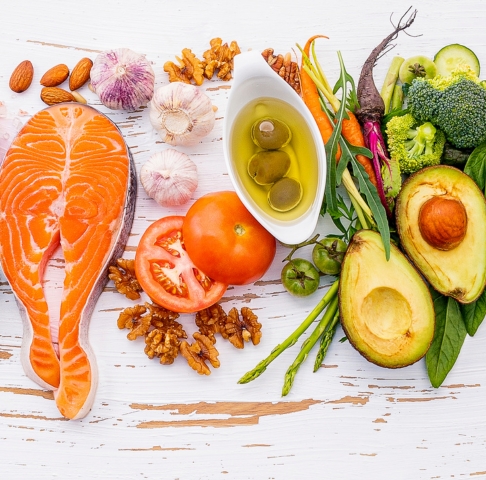While I was chatting with a cab driver about the rising cost of living, he joked, “My family spends S$200 a week on grocery shopping but we’ve been bringing home fewer bags every year!” It’s easy to see how prices are going up for daily purchases like food. Less obvious is the fact that medical costs are rising even faster, particularly cancer treatment costs. With cancer becoming increasingly common, I decided to find out how much treatment in Singapore costs. Ultimately, I wanted to know if I’d be able to afford it. So, I dug around and uncovered the hard facts.
Cancer drugs inflation is about seven times core inflation
Before I get to the dollars and cents of cancer treatment, here’s some background on inflation and what’s driving up healthcare costs.
While core inflation – this includes things like food but excludes accommodation and private transport costs – is 2.5 to 3%, medical inflation is about four times that at 10.7%. This is due to higher demand from an ageing population and supply constraints on the healthcare workforce. Drilling down further to cancer treatment costs, reports indicate that Singapore's spending on cancer drugs has been increasing by 20% annually. That’s about seven times core inflation.
Why are cancer treatment costs skyrocketing? Here are two key reasons:
- More people are being diagnosed. According to the latest Singapore Cancer Registry Report, 87,716 people were diagnosed with cancer between 2018 and 2022, compared with 72,551 people in the preceding five-year period. This could be due to our rapidly ageing population and more people getting screened for cancer.
- Cancer drugs cost more. Highly advanced technologies and precise treatments ranging from artificial intelligence-powered diagnostics tools to gene-based therapy come at a high price. This is why the annual cost increase for cancer drugs is 20%, compared to 6% for non-cancer drugs. Newer treatments like immunotherapy, which uses an individual’s own immune system to fight cancer, can cost about S$9,000 per dose, and doses are given every two to three weeks. Chances are, the next kid on the block that promises even higher efficacy and safety levels would cost more.
The cost of top cancers in Singapore
Cancer is a common critical illness in Singapore with 48 individuals being diagnosed every day. On a positive note, deaths due to cancer are declining and many patients resume meaningful lives after treatment. Highlighting insights from the Singapore Cancer Registry Report, Dr Warren Ong, Senior Vice President of Health Services at Singlife, says, “While cancer incidence rates in Singapore have increased over the decades, there has been a notable decline in mortality rates, from 93 to 80 per 100,000 population between 1968–1972 and 2014–2018. This can be attributed to several factors, including the Ministry of Health's emphasis on early detection through enhanced screening programmes and significant advancements in medical technology.”
Statistics also show that certain cancers have very high five-year survival rates. For instance, non-melanoma skin cancer has the highest survival rates in men and women at 93.2% and 97.5% respectively. Similarly, prostate cancer in men and breast and thyroid cancers in females have survival rates above 80%.
Think it won’t happen to you? Well, if you don’t have family history of cancer and you adopt a healthy lifestyle, your risk would typically be lower. However, statistics show that one in four individuals will be diagnosed with cancer by age 75 – to be precise, it’s a 26.6% chance for men and 25.8% chance for women. With such odds, it pays to know how much cancer treatment would cost and be financially prepared for it.
Treatment costs vary greatly depending on factors such as the stage of cancer, type of drugs used, and treatment frequency and duration. So, exactly what kind of figures are we looking at?
The Singlife claims data below offers an insight into what medical treatment for common cancers could cost.
*Note that the figures above are based on claims incurred from May 2023 to October 2024 and exclude pre- and post-hospitalisation claims. For the above policies, there may be claims incurred prior to May 2023 but are not included in the total bill.
It should also be noted that these claims are for treatment at a private hospital/cancer treatment centre and include GST. For more cost comparisons, refer to the Ministry of Health’s Hospital Bills and Fees Benchmarks for various procedures and conditions, and data on past bill sizes.
Looking at the figures above alone, cancer treatment could potentially cost as much as a BTO flat, part of an individual’s retirement corpus or even a child’s overseas education costs.
Non-treatment cancer costs
That’s not the end of cancer costs, however. While medical costs such as specialist doctor services, diagnostic tests, drugs and other medical supplies, and hospitalisation expenses make up a significant part of cancer treatment costs, there are other costs associated with cancer such as:
- Transportation between hospital and home
- Housekeeping services
- Childcare or eldercare services
- Homecare or medical escort services
Taking a break from work to recuperate can also mean less income to manage day-to-day costs on top of cancer treatment expenses as well as non-treatment cancer costs.
So, would I be able to afford cancer treatment?
Cancer treatment can span weeks or even years, and the total cost – which will keep increasing over time – could range from several thousand dollars (a few months’ salary) to six-figure sums or more (possibly enough to buy a flat or cover one’s retirement living costs). It might even eat into or wipe out inheritance funds meant for our loved ones.
Would I be able to pay for cancer treatment if I were diagnosed? I’m not completely sure. Who knows what financial situation I’d be in then? Would I still have a decent income? Would I have more financial commitments towards my family? Some things aren’t within my control.
However, I’m relieved to know that measures like the Ministry of Health’s Cancer Drug List, various subsidies and enhanced cancer coverage under MediShield Life are in place to ensure sustainable and affordable cancer treatment in the long term. Private insurers are also broadening the coverage scope and limits of their medical plans to keep pace with rising costs and individuals’ needs.
Thankfully, my Integrated Shield policy gives good cancer treatment coverage, so that my out-of-pocket expenses will be minimised. And because I’d rather not touch my savings for costs that my medical plan doesn’t cover, I’m going to review my critical illness coverage, which helps alleviate the overall financial burden of cancer treatment.
Medical inflation isn’t going away and on the bright side, it will bring better medical treatments and services that’ll boost chances of a long and fulfilling life after cancer – that’s one “inflation” I want to be financially ready for.🎈
Notes
1. Source: The Straits Times, “COE premiums down for all vehicle categories”, 7 November 2024.
2. Source: The Straits Times, “Gen Zers do not want to just study overseas, but also work and live abroad”, 19 February 2024.
3. Source: The Straits Times, “Single elderly Singaporeans need $1,379 a month to meet basic living standard: Study”, 22 May 2019.
4. Source: The Straits Times, “HDB launches 6,938 BTO flats, raises subsidies for three projects in prime areas”, 28 June 2024.





